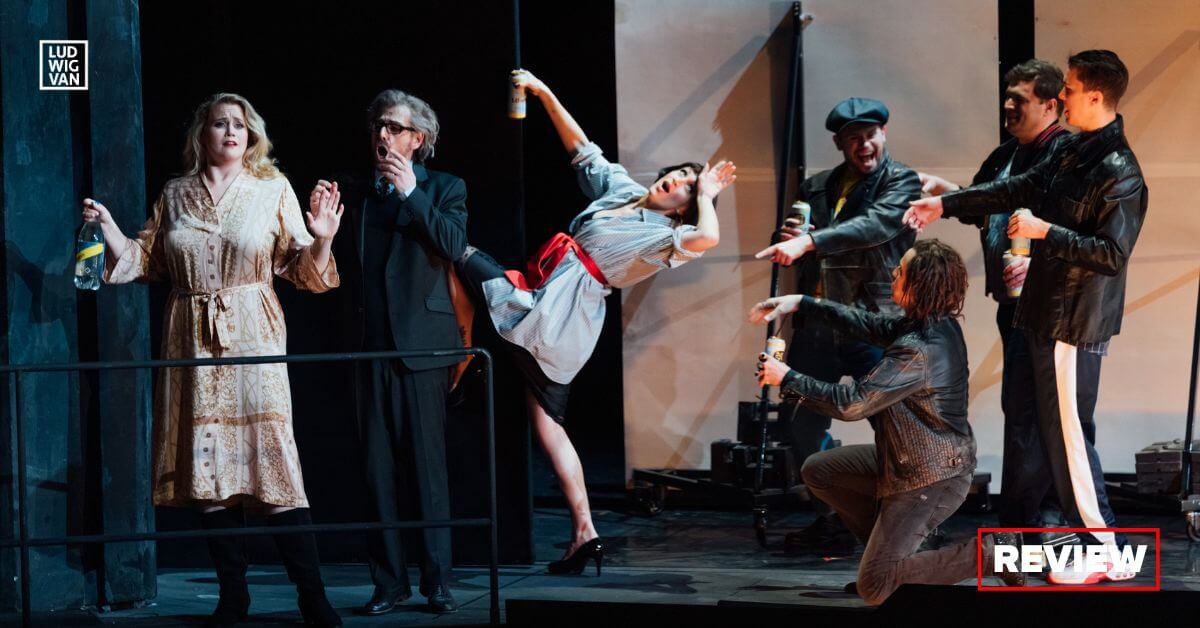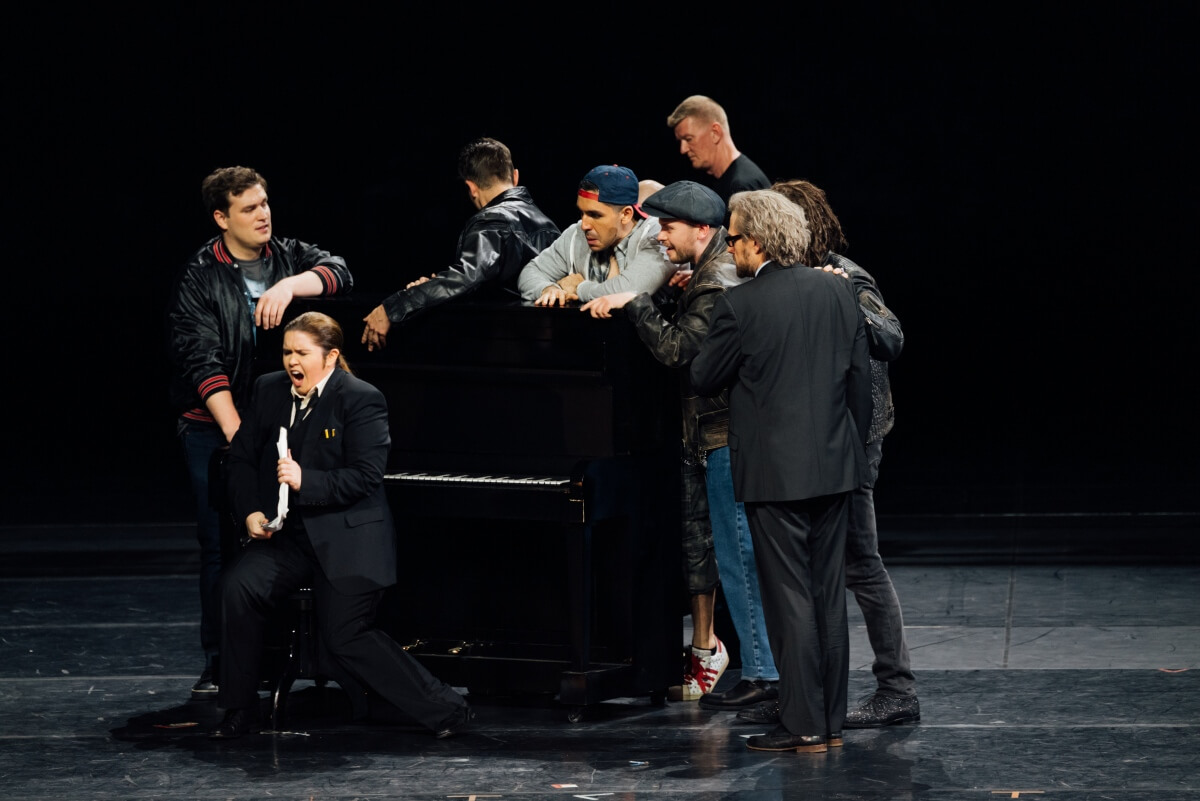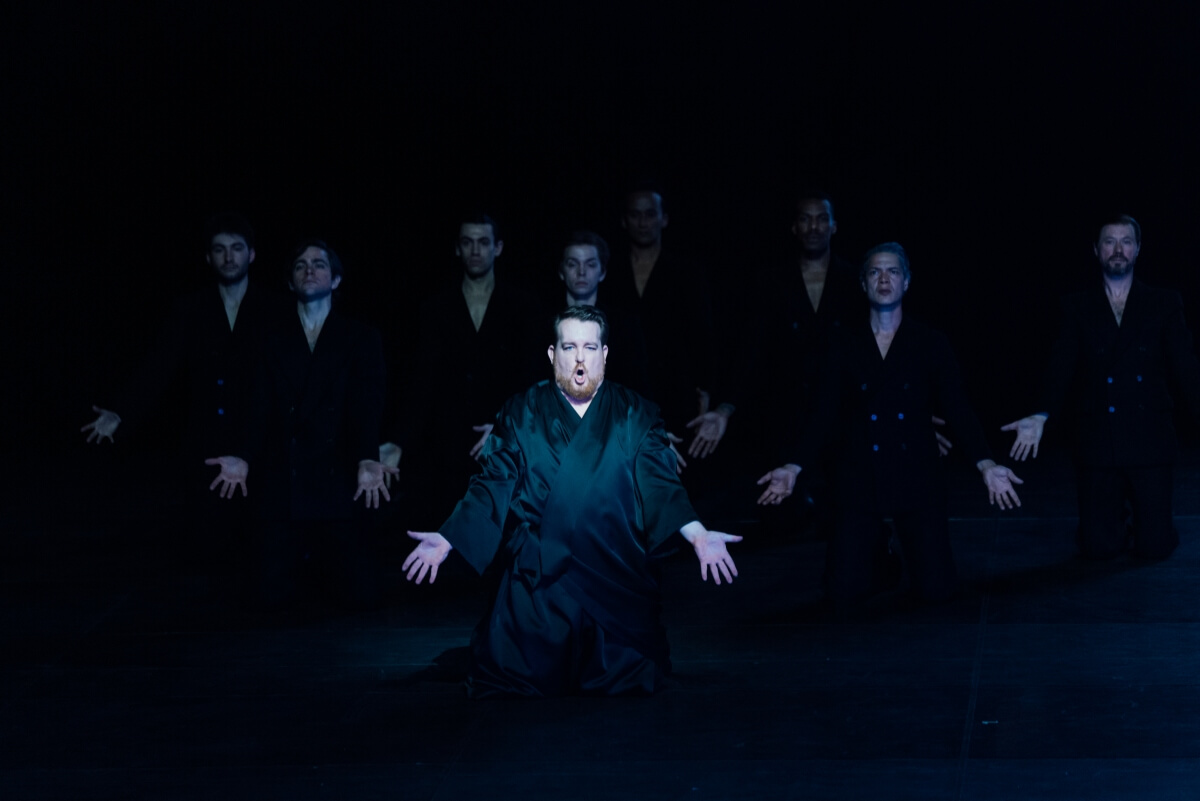
Strauss: Ariadne auf Naxos / Rachel Willis-Sorensen, sop. (Ariadne); Tara Erraught, mezzo (Komponist); Brenda Rae, mezz. (Zerbinetta); Clay Hilley, ten. (Bacchus); Michael Nagy, bar. (Musiklehrer); Sean Michael Plumb, bar. (Harlequin); Joel Williams, ten. (Scaramouche); Daniel Noyola, bass. (Truffaldin); Liam Bonthrone, ten. (Brighella); Emily Pogorelc, sop. (Najade); Valerie Vickhoff, mezz. (Dryade); Jessica Niles, sop., (Echo). Bayerisches Staatsochester, Patrick Lange, cond. Grand Theatre, Hong Kong Cultural Centre, February 22 & 24.
For the inveterate Canadian music lover with a case of wanderlust, the Hong Kong Arts Festival holds a special allure. Since its inaugural season in 1973 and now in its 52nd year, the HKAF has presented a dazzling array of local and international artists in all musical genres. It takes place annually in late February into early March, a perfect tonic for winter-weary Canadians seeking some warmth to go with the beautiful music.
In past seasons, HKAF voice fans had the pleasure of hearing stars the likes of Anna Netrebko, Cecilia Bartoli, and Thomas Quasthoff. The Grand Theatre with its fine acoustics has attracted top class conductors including Christian Thielemann, Seiji Ozawa, Riccardo Chailly, and Gustavo Dudamel, leading such great orchestras as the Wiener Philharmoniker and the Royal Concertgebouw.
My last HKAF visit was in 2019, when I witnessed an unforgettable Tannhauser staged by the visiting Oper Leipzig. Due to the pandemic, I was unable to return until now. This time around, it is the Bayerische Staatsoper, my favourite German opera company, bringing to Hong Kong its celebrated production of Ariadne auf Naxos. I have very fond memories of this production by Canadian director Robert Carsen, having seen it twice in Munich, starring the great Canadian soprano Adrianne Pieczonka in the title role as well as the Dutch soprano Eva-Maria Westbroek a few years later.

Ariadne auf Naxos is scored for a chamber orchestra and is meant to be performed in an intimate space. In Munich, it’s staged not at their main auditorium, the 2,101 seat Nationaltheater, but in the 1,122 seat Prinzregententheater. The 1,734 seat HKAF Grand Theatre, while considerably bigger, has fine acoustics and excellent sightlines and it worked very well. That said, the caveat is that media tickets are always in excellent locations, and I certainly saw and heard everything.
The opening of Ariadne, the Prologue, takes place in what serves as the rehearsal room in the home of “the richest man in Vienna.” In this production, it resembles a ballet studio, a rather unusual take on the story. Carsen likely got his inspiration from his exposure to ballet growing up as the son of Walter Carsen, the Canadian businessman and philanthropist who gave money to build the National Ballet of Canada’s rehearsal studio in Toronto’s Harbourfront, known as the Walter Carsen Centre.
Given that Ariadne has no chorus, the ballet troupe in this production serves as wordless stage extras, very much involved in the storytelling. Their youthful energy and easy athleticism provide a certain visual fluidity that makes this act come alive. Irish high mezzo Tara Erraught was an intense, passionate and well sung Komponist, who remained on the side of the pit observing the goings on for the remainder of the performance.
In great voice, American high coloratura Brenda Rae was a captivating Zerbinetta. Her showstopping “Grossmächtige Princessin” was among the best I have heard. She was perfectly matched by terrific singing actors as the commedia dell’arte troupe. Together they acted up a storm. In some productions, the shenanigans of the troupe can seem forced, but not here. Together with the silent extras, it was truly entertaining — kudos to Marco Santi for his brilliant choreography.

The Opera proper was a bit of a surprise, as I don’t recall seeing it on a bare stage. After some discreet inquiries, I found out that due to the late arrival of the sets from Germany, a restaging was done. Given the essentially minimalist vision of the Carsen production to begin with, it made no difference to my enjoyment. If anything, it allows the audience to focus entirely on the marvelous Strauss score.
While Ariadne and Bacchus make cameo appearances in the Prologue, it’s in the Opera proper that we get to hear them. American soprano Rachel Willis-Sorensen was a wonderful Ariadne — one would never have guessed that this opening night performance was her role debut. Her mezza voce in “Ein schönes war” was gorgeous, as was her resplendent top in “Es gibt ein Reich.” I would not be at all surprised if Ariadne becomes one of her signature roles.
Opposite Willis-Sorensen was American Heldentenor Clay Hilley as Bacchus. Toronto opera fans are familiar with Hilley as a terrific Florestan in the COC Fidelio last Fall. It is sometimes said that Richard Strauss hated tenors, as evidenced by his “gift” of Bacchus, a short but treacherous role. Well, this 20-minute role holds no terror for Mr. Hilley. With a trumpet of a voice, he certainly made it all sounded easy. If I were to quibble, the direction of the final scene was rather static, with Ariadne and Bacchus very far apart until near the end. But with great voices like these two, I for sure won’t complain.
German conductor Patrick Lange did full justice to the sublime Strauss score, conducting a well paced, idiomatic performance that was a joy to the ear. Given that I am a Richard Strauss addict on top of being an opera gourmand, I decided at the last minute to clear the afternoon on my last day in Hong Kong so I could attend the second performance. With opening night jitters gone, the second Ariadne was even more resplendent, with everyone in great form. The singers really sounded like they were enjoying themselves and the vociferous audience ovations. It was indeed one for the memory bank.
Bravi tutti!
Are you looking to promote an event? Have a news tip? Need to know the best events happening this weekend? Send us a note.
#LUDWIGVAN
Get the daily arts news straight to your inbox.



